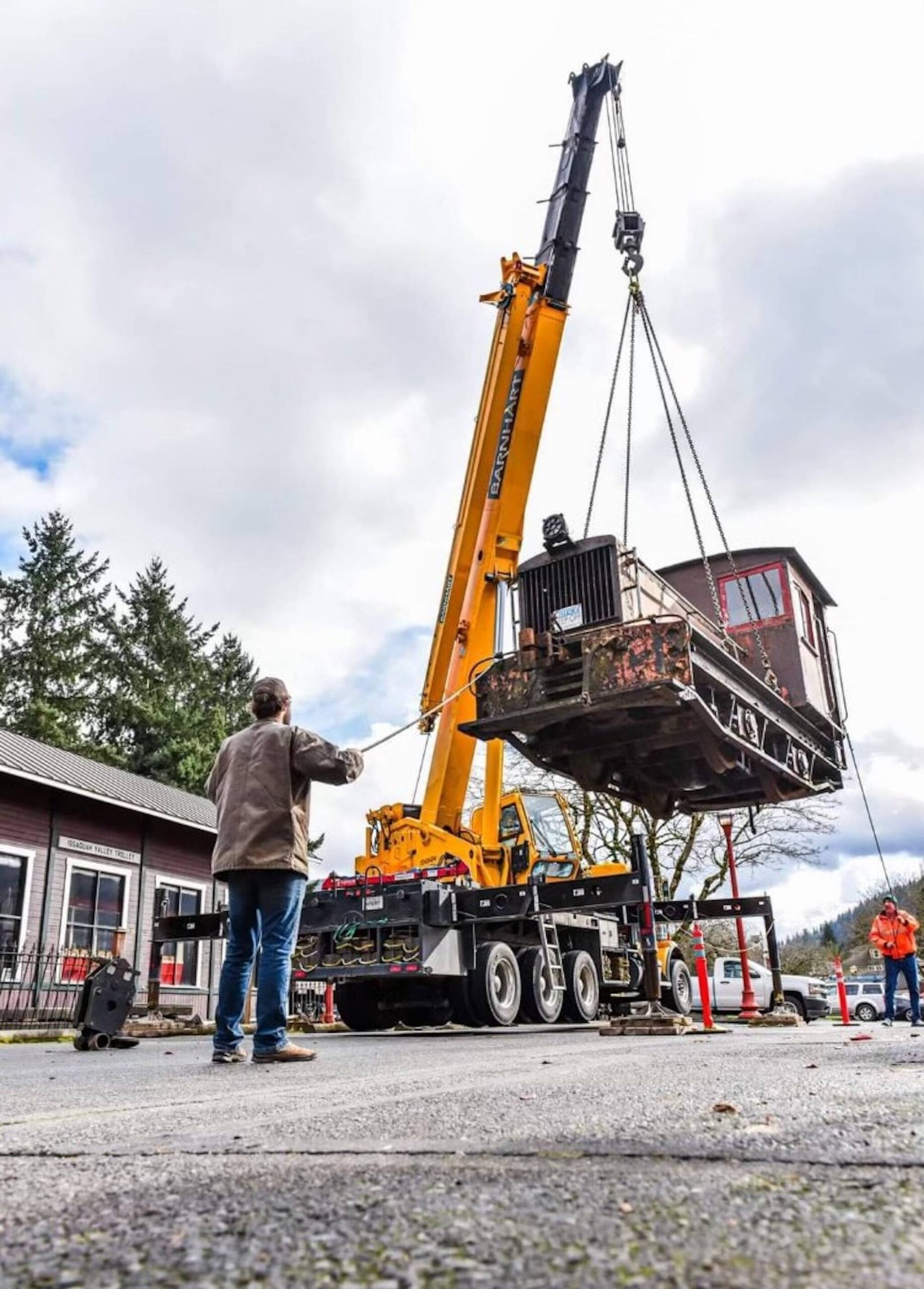A five-year pursuit to get a historic locomotive with Grays Harbor roots back to Grays Harbor has ended victoriously. The new site for the historic relic has left smiles on the people who went after it and visitors alike.
The Rayonier Plymouth No. 23 — painted Rayonier Yellow — arrived at the corner of West State and South Park streets in Aberdeen on Friday. And on Saturday, a man and his dog ventured inside to check out the interior.
“We didn’t know who they were,” said Tim Quigg, who helped bring the historic piece from Issaquah to Aberdeen.
Quigg chuckled when he recalled the visitors’ experience, which was capped with a photo of them inside the cab.
Josh Kaivo, president of Peninsular Railway and Lumbermen’s Museum (PRLM) in Shelton, worked for five years to get the piece to Aberdeen. Issaquah Depot Museum donated it to Peninsular, a 501(c)3 nonprofit.
According to Kaivo’s news release, the vision for the locomotive is it’s to be “for display and operation in Grays Harbor.”
“The 23 has been restored and repainted under the supervision of Peninsular Railway President Josh Kaivo, and thanks to the generosity of Tim Quigg,” the release states.
The historic mode of transportation — built in 1925 — is the newest addition to PRLM’s collection. It took a lot to get it to Aberdeen. The locomotive needed a 40-ton and a 60-ton crane, because they found out the 40-ton crane wasn’t strong enough. They needed more power, and they found success lifting it with the 60-ton crane instead.
The locomotive’s service life lasted from 1962 to 1986. It operated in Rayonier Inc’s railroad camp, Crane Creek, and ITT Rayonier.
When Rayonier shut down the Grays Harbor line in 1986, this locomotive moved to the Puget Sound Railway Historical Society in Snoqualmie. In 1995, it went to the Issaquah Historical Society.
“The cab structure has been replaced and her motor has been removed for storage and safekeeping, but otherwise, she’s largely still intact,” according to provided historic information.
For now, it will remain at its current site, but for where it’ll end up, that’s to be determined. The locomotive needs maintenance and repairs before it gets to its final stop.
According to Kaivo and Quigg, they want the public’s involvement, interests and thoughts as far as what to do about the locomotive. For updates and inquiries, go to www.peninsularailway.org.
The piece will receive additional decals as well. Stay tuned.
Quigg gave one final thought on the locomotive’s initial appearance in Aberdeen.
“History is to be shared for generations to follow,” Quigg said. “It’s time!”
Contact Reporter Matthew N. Wells at matthew.wells@thedailyworld.com.


